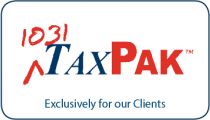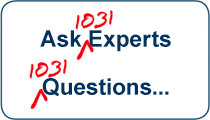You are here
1031 News › Handling Debt in a 1031 Exchange: It’s Easier Than You Think › Handling Debt in a 1031 Exchange: It’s Easier Than You ThinkHandling Debt in a 1031 Exchange: It’s Easier Than You Think
Error message
Deprecated function: The each() function is deprecated. This message will be suppressed on further calls in _taxonomy_menu_trails_menu_breadcrumb_alter() (line 436 of /home/expert1031/public_html/sites/all/modules/taxonomy_menu_trails/taxonomy_menu_trails.inc).
One of the most confusing and misunderstood parts of Section 1031 is how debt is handled in an exchange. Recently some of our clients have had to deal with the pain of overleveraged property and, not surprisingly, want as little a debt as possible when they make a new purchase. And because loans are harder to get right now, some lenders require much larger down payments. The net result is that questions about the required amount of debt on the new property are common.
Someone, after Congress rewrote Section 1031, made the statement that the debt on the new property had to be at least equal to the debt that was paid off on the sale of the old property. History doesn’t reveal to us who first said it, but it has since been repeated so many times it’s now considered ‘fact’ by many exchange professionals, including many CPAs and attorneys.
In fact, the tax Regulations provide that cash paid by the taxpayer offsets liability relief in the exchange. In other words, if you buy equal or up, and you reinvest the net cash from the sale, then it doesn’t matter where the balance of the purchase price come from. As a practical matter, most of our clients get a loan for the amount of the purchase price of the new property that is in excess of the cash that they rolled over from the sale of their old property. But the point is they don’t have too. They can pay cash for the new property as long as they buy equal or up.
Also, the nature of the debt surrounding the properties is not important either, and it makes no difference if either the old debt or the new debt is recourse or non-recourse. And it doesn’t make any difference if the debt is from a loan that you took out, or from a loan that you assumed when you bought the old property.
It’s also not important that the debt be secured against the property; only that it be associated with the property. So an unsecured loan that you received from a friend or a relative to buy or improve the property, or a loan you secured against another property to enable you to buy or improve the exchange property, or even credit card debt that you incurred improving the exchange property are all debts associated with an exchange property and can be easily handled within the exchange. Just be sure you can trace the proceeds and document that the funds were used on the property.
So the bottom line here is that rather than debt being a restrictive obstacle in an exchange it’s really a flexible tool.
...History doesn’t reveal who first said it, but it’s repeated so often it’s considered ‘fact’ by many exchange professionals, including many CPAs and attorneys...
By Gary Gorman, founder, The 1031 Exchange Expert’s LLC
Gary Gorman is the founder and owner of 1031 Exchange Experts’ LLC, an independent national qualified intermediary. A retired CPA, Gary is the author of the best-selling 1031 exchange book: Exchanging Up!, and a contributor to numerous publications, including Forbes, The Wall Street Journal, Bloomberg’s and The New York Times. He’s also a contributing author of books by Donald Trump and Rich Dad/Poor Dad author Robert Kiyosaki. He can be reached at gary@expert1031.com, or nationwide, toll free at 866-694-0204.





It Doesn’t End at 15%
Multi-Ownership issues in 1031 exchanges?
1031 Exchanges Targeted for more audits by IRS and states